Cloud Tour of the Four Seas (1441) Guangdong Panorama Tour 3--Former Site of Whampoa Military Academy

In late March 2021, when traveling to Guangdong, I visited the former site of Whampoa Military Academy. The picture shows the stone archway at the former site of Whampoa Military Academy.

The former site of Whampoa Military Academy is located on Changzhou Island in Huangpu District, Guangzhou City. It was originally the buildings of the Army Primary School and the Naval School of the Qing Dynasty. On June 16, the 13th year of the Republic of China (1924), Sun Yat-sen, with the help of Soviet advisers, founded a school for training military cadres. It was named the "Chinese Kuomintang Army Officer School" and later renamed the "Republic of China Army Officer School". The picture shows the population of the former site of Whampoa Military Academy.

The Whampoa Military Academy is a gathering of heroes and famous generals, which is of great significance in China's modern and military history. In 1988, the former site was designated as a national key cultural relic protection unit. In December 2016, the former site of Whampoa Military Academy was selected into the "National List of Red Tourist Attractions". On December 2, 2017, it was selected as the "Second Batch of China's 20th Century Architectural Heritage".

The style of the gate of Whampoa Military Academy is very simple. The words "Army Officer Academy" are written by Tan Yankai on the horizontal plaque above the center. The school gate was rebuilt in 1965 by the South China Sea Fleet of the People's Liberation Army.

Next to the gate of Whampoa Military Academy, there is Sun Yat-sen's handwritten letter: "The revolution has not yet succeeded."

There is Sun Yat-sen's handwritten letter next to the gate of Whampoa Military Academy: "Comrades still need to work hard."

A couplet hangs at the door of the second gate:"Stop by killing all the enemies, and turn back before completing the revolution."

This is the guard room next to the gate of Whampoa Military Academy

Many of the former sites of the Whampoa Military Academy were rebuilt in the later period. Only the two big trees behind the gate were preserved from the previous war and are still luxuriant.

There is a Zouma Building on the front of the gate, called the school headquarters. The school headquarters is a Lingnan ancestral temple style courtyard building with a two-story brick and wood structure, three roads and four entrances, that is, three main passages and four rows of houses.
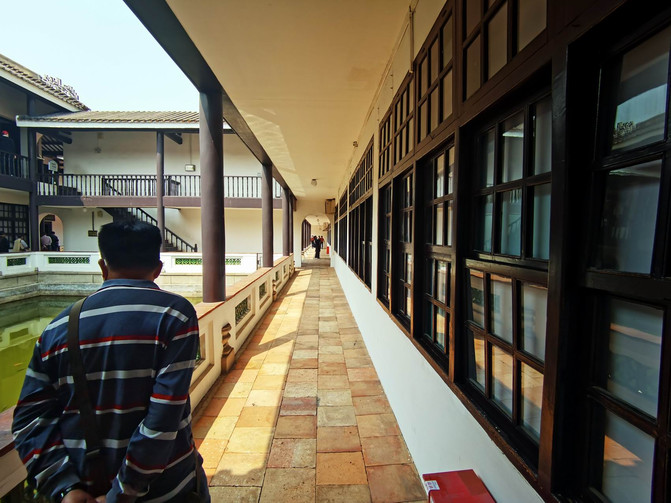
On the east and west sides of the north-south central axis, the houses are arranged in the same form and symmetrical to each other. The four rows of houses are connected by corridors, surrounded by walls, and have a building area of 1060 square meters.

The ground floor of the building was called the Big Flower Hall at that time. In the early days of the school, it was used as an auditorium, where teacher and student meetings were often held.

This is the explanation for the big flower hall

The large wooden barrel in front of the dormitory building holds water for fire protection.

The big wooden barrel was called the "Taiping Bucket" at that time, which is the description of the "Taiping Bucket".

There are many exhibitions in the former site of Whampoa Military Academy. This is a special exhibition of oral history of Huangpu alumni.
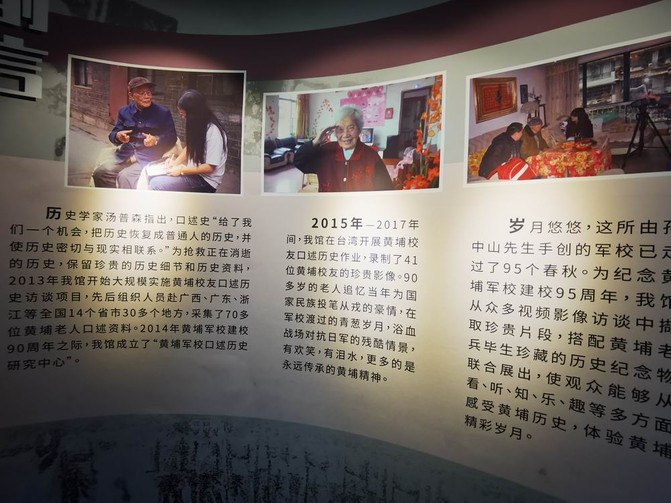
Alumni participating in the Huangpu Alumni Oral History Special Exhibition

Tourists visit a special exhibition on oral history of Huangpu alumni

In the early days of its founding, the military academy allowed the dissemination of theories from different parties and schools, focusing on both the Three People's Principles and communism. There are a maximum of 26 political courses, including "Modern History of China","Introduction to Social Sciences","Political Science","Soviet Studies", etc. The picture shows some teaching materials from Whampoa Military Academy.

This is the entrance to the Whampoa Military Academy Historical Museum Exhibition

Commemorative photo I took at the entrance of the Whampoa Military Academy Historical Museum Exhibition

In May 1924, with the help of the Communist Party of China and the Soviet Union, Sun Yat-sen founded the Whampoa Military Academy to train revolutionary military cadres. The picture shows a photo of Sun Yat-sen hosting a banquet for Soviet experts.

A party representative system and a political work system have been established in the school. Chiang Kai-shek served as president, Liao Zhongkai served as party representative, Zhou Enlai served as director of the Political Department, Ye Jianying served as deputy director of the Professor Department, and Xiong Xiong, Yun Daiying, Xiao Chunu, Nie Rongzhen, Zhang Qiuren and other Communists served as instructors and were responsible for all aspects of work. The picture shows the preface to the Whampoa Military Academy Historical Relics Exhibition.

The picture shows Zhou Enlai, director of the Political Department of the Whampoa Military Academy
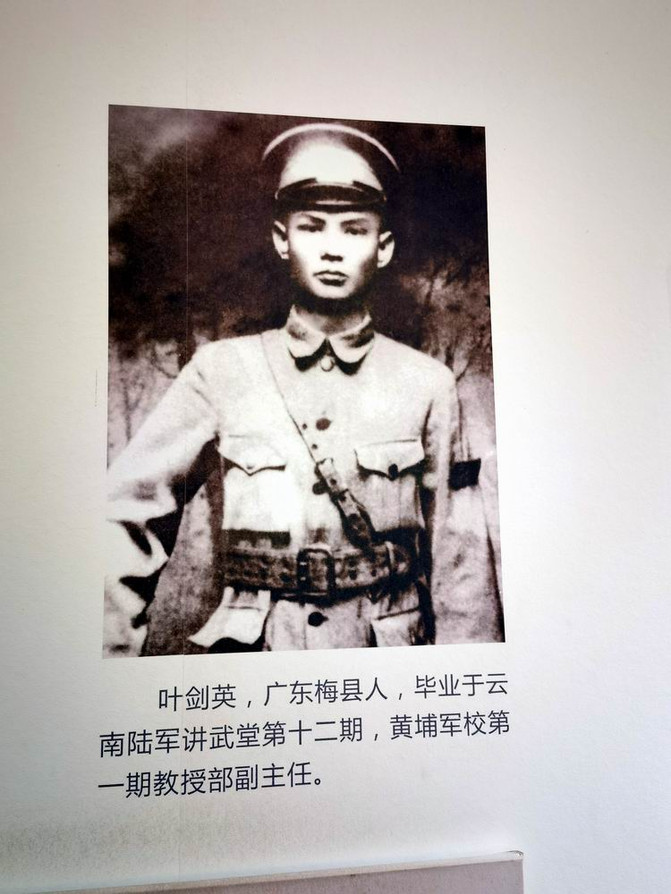
The picture shows Ye Jianying, deputy director of the Professorship Department of Whampoa Military Academy

The picture shows Nie Rongzhen (third from front right), who serves as a faculty member of the Political Department of Whampoa Military Academy

Whampoa Military Academy is a new type of military and political school founded by Sun Yat-sen with the help of the Communist Party of China and the Soviet Union. The opening ceremony was held on June 16, 1924. In his opening speech, Sun Yat-sen proposed "creating a revolutionary army to save China from danger" as the purpose of running the school.

Whampoa Military Academy School Song

There are three top leaders in the military academy. They are Premier Sun Yat-sen, Principal Chiang Kai-shek, and Party Representative Liao Zhongkai.

This is the office of Prime Minister Sun Yat-sen
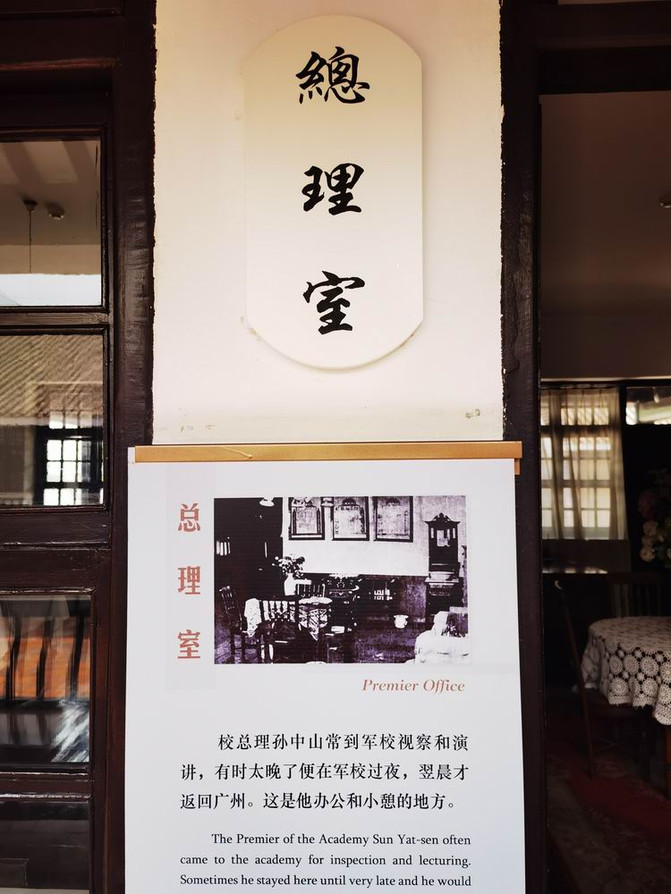
Explanation from Prime Minister Sun Yat-sen's Office

This is the office of principal Chiang Kai-shek

Explanation from President Chiang Kai-shek's office

At that time, there was also a school headquarters office. Since Chiang Kai-shek usually worked in the principal's office, it could be said to be the office of party representative Liao Zhongkai.

Instructions from the school headquarters office

The principal's living room is the "officer's gathering room"

Explanation of "Officers 'Gathering Room"
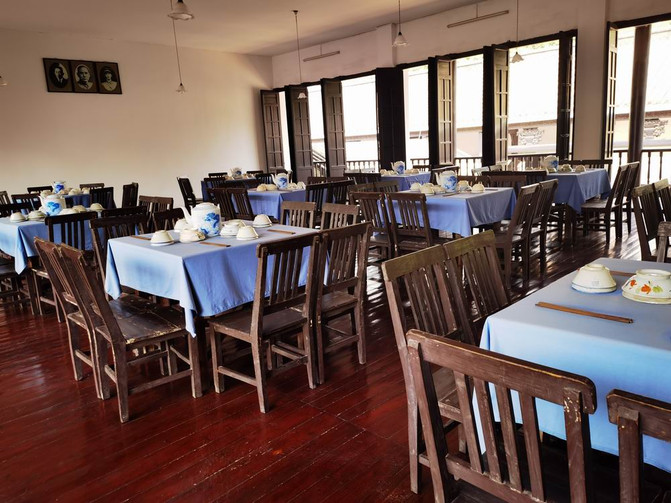
The chief's dining room is a large conference room

Description of the magistrate's dining room

The professor department is a very important department, responsible for formulating teaching plans and performance assessment. The director is Wang Bailing and the deputy director is Ye Jianying.

Explanation from the professor department

This is the newspaper and newspaper reading room
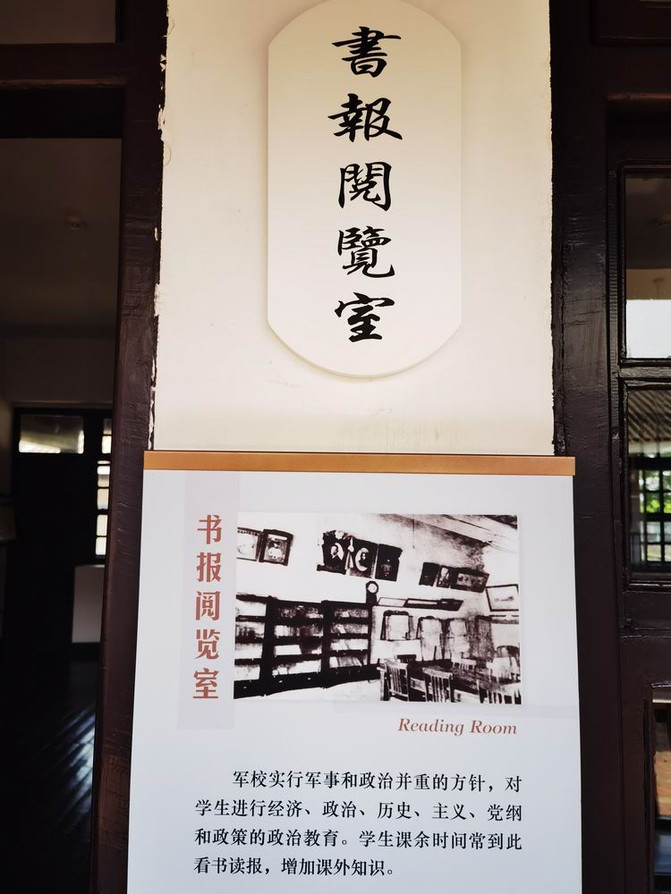
Instructions for the Book Reading Room

The light gray military caps in the student dormitory are all placed on the upper left of the desks; on the wooden bed of the dormitory, white cloth sheets and military blankets are stacked square; on the wooden plank, uniforms, basins, mouth cups, straw sandals and other items are neatly patterned...

Whampoa Military Academy is of great significance in both modern and military history of China. Huangpu teachers and students were brave and tenacious in putting down the rebellion of the merchant group, the Eastern Expedition and Northern Expedition, and made immortal contributions. The picture shows Chiang Kai-shek, the principal of the Northern Expedition.

After the outbreak of the Anti-Japanese War, Huangpu teachers and students once again joined hands and made outstanding contributions to the struggle for national liberation. The picture shows Li Zongren, a teacher and student in Huangpu during the Anti-Japanese War.

The picture shows Huangpu teachers and students Xiang Ying, Chen Yi, etc. in the New Fourth Army of the Anti-Japanese War.
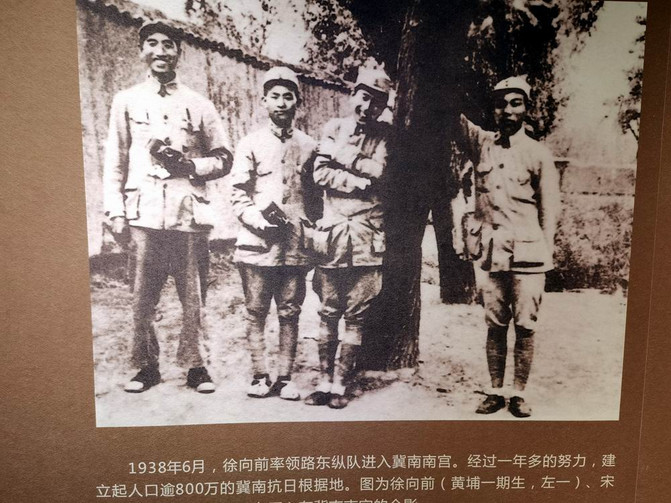
The picture shows Xu Xiangqian, a teacher and student in Huangpu during the Anti-Japanese War

The picture shows Zuo Quan, a teacher and student in Huangpu during the Anti-Japanese War

The military academy was held for seven periods on Changzhou Island. In 1930, it moved to Nanjing, and later to Chengdu and Taiwan. The picture shows the exit of the former campus headquarters of Whampoa Military Academy.

The main buildings that have been restored and opened to the public include more than a dozen places, including the military academy gate, school headquarters, Premier Sun Monument and Memorial Room, clubs, swimming pools, Eastern Expedition Martyrs Cemetery, Northern Expedition Monument, Jishen Park, and Jiaosi Pavilion. Due to time constraints, we only visited the school headquarters. This is the Whampoa Military Academy Memorial Hall.

Since the Revolution of 1911, China has experienced the Northern Expedition War, the Agrarian Revolution, the Anti-Japanese War and the Liberation War. During the long revolutionary war, Whampoa Military Academy trained many military strategists and generals for the Kuomintang and Communist Party. Five of the ten marshals of the People's Liberation Army are from the Whampoa Military Academy. They are Xu Xiangqian, Ye Jianying, Nie Rongzhen, Lin Biao and Chen Yi. Among the first ten generals awarded titles by the People's Liberation Army, three were from Whampoa Military Academy. They were Chen Geng, Xu Guangda and Luo Ruiqing. The picture shows the military port in front of the former site of Whampoa Military Academy.

At noon that day, we had lunch at the Military Academy Farm.
Previous Article:Summer hiking| A natural journey in the suburbs of Guangzhou
Next Article:Fandai is in trouble, the grass is not in trouble, and the autumn is pink one by one
